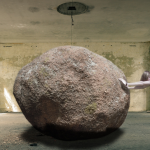Never Settle for Just the Complaint
Joe Kellerstein, DC, ND
The First Call
Denise is a Southern belle if ever there was one … at least, she sounds that way on the phone.
That’s the nature of our relationship. We have not met in person. She has been seen by a good, local homeopathic practitioner who referred her because he was having trouble procuring results. This 69-year-old patient has a warm heart and incredible resilience.
“If unpleasant, fearful things happen to my family … if they hurt, I hurt. We lost my husband in a horrible way in 1980. There has been no closure. Two thousand six was a bad year as well. We lost five people this last year. My son has been involved in motor vehicle accidents, which have left him physically impaired. There have been divorces. My daughter is bipolar. I’ve had reconstructive surgery for the bladder and vaginal area, which took five months to recover from.
“The joy is gone. When my kids hurt, so do I. It’s nonstop.”
Denise’s presenting complaint was acute bronchitis. There was a tight chest with lots of phlegm. Other factors:
- Her eyes would tear easily, especially from reading.
- There was ”hot water” running from her nose.
- The left ear and left eye were red.
- Teeth ached.
- When she sneezed, it provoked a deep cough.
- Tiredness. Walking to the living room exhausted her.
- She felt anxious when the phone rang. There was no interest in talking.
- There is burning in the left shoulder blade area.
- She felt burning in the sacroiliac area, which had been worsening over the last year. This pain shoots over top of the left hip. Sweeping is a killer.
Some of her comments:
“It’s the disappointments. I am just a big baby with the disappointments.”
(There is a history of two serious car accidents, in 1986 and 1997.) “I had a near-death experience with one and a huge amount of physical therapy,” she said.
“Seems like the heat of the summer makes me irritable. I like cool, flowing air.”
“I enjoy people.”
I was eager to prescribe for the respiratory tract issues, and I did (Pulsatila 200c). The patient elected to use antibiotics simultaneous to the remedy, so I will refrain from commenting on the unassessable.
The Second Call
Two months later, the phone call from Denise was of a different nature. Now the low back had aggravated. It was described as being so hot and burning it felt like a piece of charcoal. As always, it was on the left extending to the thigh. By late afternoon it was unbearable, which forced Denise to lie down with an ice pack.
An MRI showed multi-level spondylosis, disc space narrowing worst at L2-3; foraminal narrowing most at the left of L2-3; less on the right at L3-4 and L4-5. There was no evidence of associated stenosis.
This certainly adds up to a very bad back (a brilliant deduction?).
I asked Denise how she was doing otherwise, and the floodgates opened. There were very sad issues regarding her son and daughter, and a multitude of other stressors on this noble lady’s shoulders. She was right in the thick of things, advocating and doing for everyone. When we spoke of these emotional issues, the weeping was loud and unstoppable.
Beyond the Complaint
When taking a case, take the whole case. Never (aside from first aid) settle for just the complaint, and here is a good example of why.
We can conceptually divide this case into several areas: The various complaints or syndromes; the general chronic case; the hygienic environment of the person; and the observational field of the patient and her behavior (observed both by the physician and those who have attended her). The characterizing elements – those symptoms of illness that narrow the selection of the remedy dramatically – can be in any of these data fields. This is what draws our initial attention and guides us into the study of Materia Medica.
In this situation, Denise’s pain is intense and striking, but nothing characterizes it sufficiently to guide us anywhere. Even more striking is the preoccupation with others despite her intense pain.
The mental symptoms – multiple grief episodes, and especially the unresolved death of her husband years ago, plus the sensitivity to disappointment and, lastly, the spasmodic weeping – tend to implicate Ignatia.
My reaction to this possibility was that I seemed driven to it by the lack of evidence for something more compelling. There was so much physical degeneration in the spine that I intuitively wanted something that directly corresponded, but I didn’t have it.
I prescribed Ignatia 30c daily. Within one week there was no burning, no ice packs and the emotions were so much smoother. It has been almost a year, and Ignatia is still needed frequently, now prescribed in the 200c range about once every three days.
While the effect so far seems only palliative, it’s still an amazing and repeatable response.
 Joe Kellerstein, DC, ND graduated as a chiropractor in 1980 and as a naturopathic physician in 1984. He graduated with a specialty in homeopathy from the Canadian Academy for Homeopathy, and subsequently lectured there for two years. He also lectured in homeopathy for several years at CCNM; for eight years at the Toronto School of Homeopathic Medicine; and for two years at the British Institute for Homeopathy. Kellerstein’s mission is the exploration of natural medicine in a holistic context, especially homeopathy and facilitating the experience of healing in clients.
Joe Kellerstein, DC, ND graduated as a chiropractor in 1980 and as a naturopathic physician in 1984. He graduated with a specialty in homeopathy from the Canadian Academy for Homeopathy, and subsequently lectured there for two years. He also lectured in homeopathy for several years at CCNM; for eight years at the Toronto School of Homeopathic Medicine; and for two years at the British Institute for Homeopathy. Kellerstein’s mission is the exploration of natural medicine in a holistic context, especially homeopathy and facilitating the experience of healing in clients.










